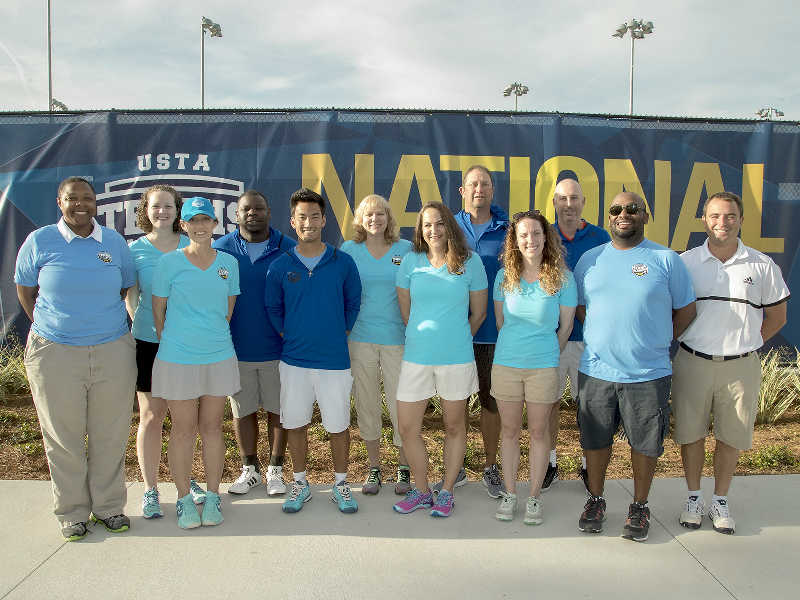Purpose
The primary goal of the program is to help all tennis players enjoy the game by providing a method of classifying skill levels for more compatible matches, group lessons, league play, tournaments and other programs.
Guidelines
The rating categories are generalizations about skill levels. You may find that you actually play above or below the category which best describes your skill level, depending on your competitive ability. The category you choose is not meant to be permanent, but may be adjusted as your skills change or as your match play demonstrates the need for reclassification. Ultimately your rating is based upon match results. Players must rate themselves in accordance with the NTRP. When players are rating themselves and they question at which level they should play, they should place themselves in the higher level of play.
To Place Yourself:
A. Begin with 1.5. Read all categories carefully and then decide which one best describes your present ability level. Be certain that you qualify on all points of all preceding levels as well as those in the level you choose.
B. When rating yourself assume you are playing against a player of the same gender and the same ability.
General Characteristics Of Various Playing Levels
1.5 This player has limited experience and is still working primarily on getting the ball into play.
2.0 This player needs on-court experience. This player has obvious stroke weaknesses but is familiar with basic positions for singles and doubles play.
2.5 This player is learning to judge where the ball is going although court coverage is weak. Can sustain a short rally of slow pace with other players of the same ability.
3.0 This player is fairly consistent when hitting medium paced shots, but is not comfortable with all strokes and lacks execution when trying for directional control, depth, or power. Most common doubles formation is one-up, one-back.
3.5 This player has achieved improved stroke dependability with directional control on moderate shots, but still lacks depth and variety. This player exhibits more aggressive net play, has improved court coverage, and is developing teamwork in doubles.
4.0 This player has dependable strokes, including directional control and depth on both forehand and backhand sides on moderate shots, plus the ability to use lobs, overheads, approach shots and volleys with some success. This player occasionally forces errors when serving. Rallies may be lost due to impatience. Teamwork in doubles is evident.
4.5 This player has begun to master the use of power and spins and is beginning to handle pace, has sound footwork, can control depth of shots, and is beginning to vary game plan according to opponents. This player can hit first serves with power and accuracy and place the second serve. This player tends to over hit on difficult shots. Aggressive net play is common in doubles.
5.0 This player has good shot anticipation and frequently has an outstanding shot or attribute around which a game may be structured. This player can regularly hit winners or force errors off of short balls and can put away volleys, can successfully execute lobs, drop shots, half volleys, overhead smashes, and has good depth and spin on most 2nd serves.
5.5 This player has developed power and/or consistency as a major weapon. This player can vary strategies and styles of play in a competitive situation and hits dependable shots in a stress situation.
6.0 to 7.0 The 6.0 player typically has had intensive training for national tournament competition at the junior and collegiate levels and has obtained a sectional and/or national ranking. The 7.0 is a world class player.
Back to the 2011 USTA National Campus Championship



